By Alex Trukan
When playing with a compact defending block, it is harder to cover the width of the pitch if the ball is moved quickly. This is why, usually a ‘weak side’ appears on the opposite side of the ball which can be exploited by the opposition. If the field is switched with pace, it will cause a problem for the defending team to slide across and get behind the ball. There are however, a couple of strategies that might be used to prevent this. One of them is playing with five players on the back line and leaving one player wide on the opposite side of the ball to cover the opposition winger. This is usually used when the opposition plays well in tight areas and switches sides quickly into one of their players positioned near the touchline to provide attacking width.
When the ball is in central areas, the defending team shapes up with a traditional back five. Wingbacks’ starting positions are slightly higher than centre backs in order to be able to affect the wide areas as the ball is played there. The width of the back line should not exceed the width of the penalty box. The rest of the team stays compact and moves together. Depending on the strategy and the opposition, players might choose to mark zonally or individually (certain players).
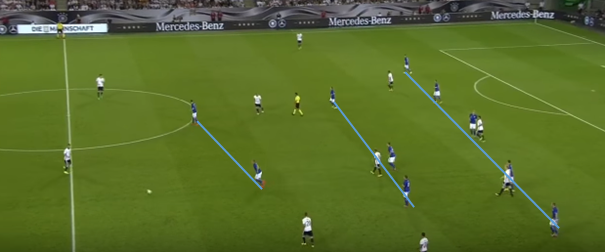
As the direct switch is usually not available, the attacking team will try to combine through the middle to then play to the opposite side. Any pass across the pitch means that the defending team has to slide and retain compactness as they do it.
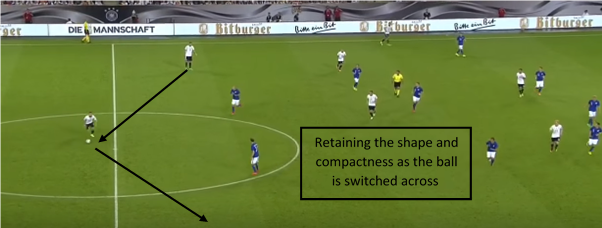
As the ball arrives on the opposite side, the biggest threat are channels that arise between left centre back and left wing back. This is often the case as a wing back will stay wide with his player to mark. The key to prevent any through balls is central midfielder screening the striker as well as spare centre back coming across quickly enough to support left centre back.
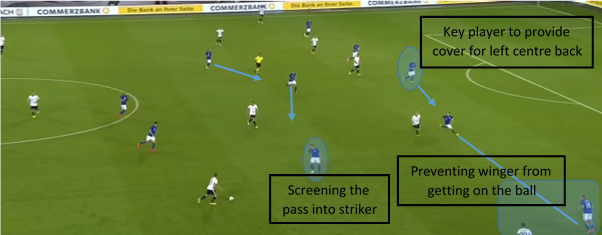
After the ball is switched, the defending team should regain their compactness. Too big distances between players and units is an opportunity for the opposition to play through and this is something they are hoping for. The priority is to restrict central areas and only if this is achieved, the team might focus on preventing a switch and regaining possession.
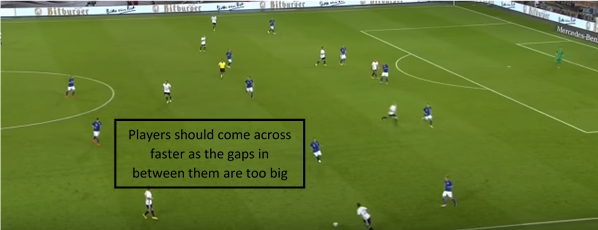
Leaving one player on the ‘weak side’ is also a great strategy for counter attacking. As the ball is regained on the opposite side of the pitch (where players can get more compact and tighter), it could be switched into the wing back making a forward run. He will often have space in front of him to drive in as most of the players will be positioned where the team won possession.
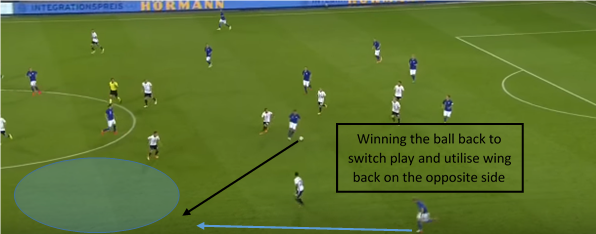
The defending team might choose to leave a wing back in wide areas on one side as well as on both sides of the pitch in relation to where the ball is. This will be usually dependant on the opposition attacking strategy and their strengths. This way of preventing switching play has to be accompanied with close pressure on the ball as well as support and cover to prevent combination play.
By Alex Trukan, Development Coach, Nottingham Forest
@AlexTrukan


